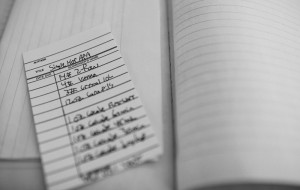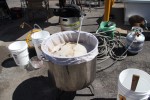“If you will it, dude, it is no dream”
-Walter Sobchak (quoting Theodore Herzl)
 Wouldn’t it be nice if our minds were powerful enough to manifest a glass of delicious beer with nothing more than a mere bolt of mind lightning? Unfortunately for us, that is not the case. Beer is a complex beverage that merits great amounts of time to make as well as to consume. When enjoying a pint of a delicious brew, you may find yourself wondering how it was created. It’s not quite like your dad explained it as a wide-eyed teenager.
Wouldn’t it be nice if our minds were powerful enough to manifest a glass of delicious beer with nothing more than a mere bolt of mind lightning? Unfortunately for us, that is not the case. Beer is a complex beverage that merits great amounts of time to make as well as to consume. When enjoying a pint of a delicious brew, you may find yourself wondering how it was created. It’s not quite like your dad explained it as a wide-eyed teenager.
Though a specific beer usually begins merely as a thought in a brewer’s mind, it really starts to come to fruition when it is put on paper. Building a recipe is a very important part of brewing. Grain. Hops. Water. Yeast. Though beer can have as few as these four ingredients, it requires an equilibrium between the four to create a beverage worthy of consumption and comment. Planning a beer is almost as fun as brewing it (though not nearly as fun as drinking it). A recipe can make or break a beer. When entering the beginning stages of a recipe my first step is intangible. I imagine that perfectly balanced, flavorful, impeccable liquid. I then remind myself of my inability to accomplish such a feat, so I aim slightly below that and begin the process of drafting a solid, attainable recipe.
First order of business when drafting a recipe is the grain bill, or grist. I find myself starting with the base malts and then rounding out the bill with the specialty grains. American 2-Row Pale Malt has come to be a good friend of mine. It is included in most every recipe I write, unless, of course, I’m going for a style requiring a slightly different base malt, such as a Belgian 2-row or a Pilsner malt. Next up are the specialty grains. These are the grains that really add character to your beer. A touch of Crystal 60L and a hint of Vienna can really make a big difference in a Pale Ale not only in flavor, but in color, appearance, and mouthfeel. Certain grains require a certain percentage of the bill, and that amount is up to you, the homebrewer.
Next up is the hop schedule. Even when brewing a blacker than black stout, hops are required to balance the malty sweetness of the grain. Though they may not be overtly present in a beer, they are required for the balance, and to give some aroma. Neutral hops such as Cascade are good for beers that don’t require a lot of hop presence, while a nice IPA may require hops with a higher alpha acid content. Alpha acid units are basically a percentage that will tell you how much bittering potential a particular hop contains. Hops range in character from fruity and citrusy to flowery to foresty and piney. Mixing and matching these different hop profiles can also be a lot of fun. After all, it is your beer.
The water may be the least of your worries when drafting a recipe, but once you’ve become nit-picky enough, you may want to consider altering your brewing water. Though Louisville does have pretty solid water in terms of brewing, it still contains some unwanted amounts of chlorine and chloramine. Campden tablets are an easy way to remove certain amounts of these chemicals. It’s an easy step and probably worth the very small investment.
Yeast selection is another very important step. One can simply choose an all-purpose ale yeast for nearly every batch, but a lot of beers require a yeast with a certain profile. Some yeasts are meant to provide a portion of the flavor profile of a beer, while in other beers it is considered a flaw if you can taste it. A Hefeweizen, for example, imparts a lot of flavor from the yeast, while a cream ale should have no yeasty side effects. As with every other ingredient, it is always best just to experiment. If you have the capacity with your set-up, brew a batch, split it into two carboys and pitch different yeasts.
There is no formulaic approach to a recipe that makes a flawless beer that can be consumed and praised by every single person. There are recipes that are darn near perfect and there are recipes that are darn near horrific. Like brewing, formulating a recipe is an art. A very useful tool is the BeerSmith software. You are able to draw out a recipe and see what the expected results are. If you want to brew it, it’s yours to brew. Go ahead and brew that Cat Hair Salsa Stout you’ve been thinking about. Dream it. Will it. Brew it.





